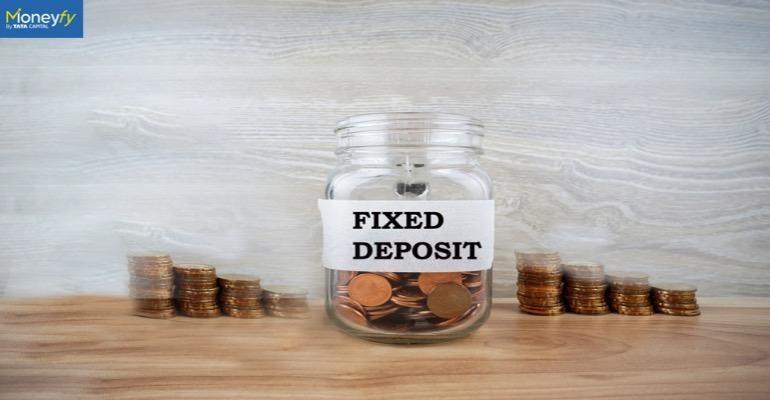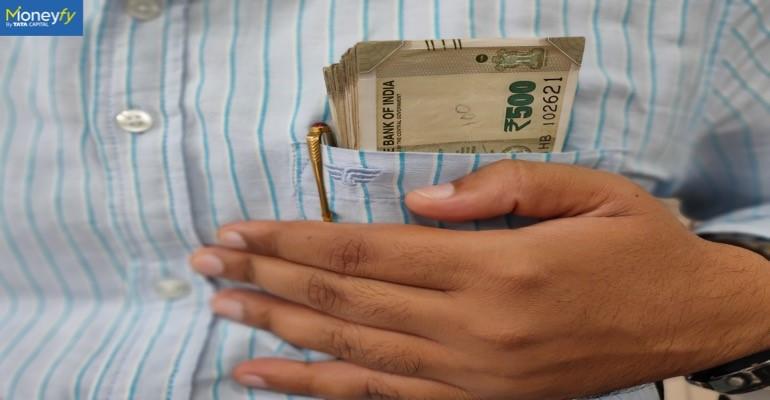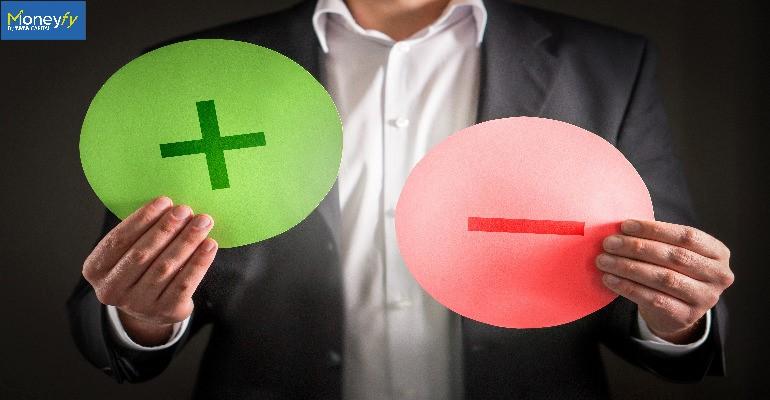Overview
In India, Fixed Deposit Receipts (FDRs) are a popular investment type, offering a multitude of benefits to investors who are seeking safety and growth in their capital. Fixed Deposit Receipts have a significant role in the financial markets, providing a stable and secure option for individuals to invest their hard-earned money. This article delves into the meaning, purpose and benefits of Fixed Deposit Receipts in India, highlighting the importance of having an FD Receipt, Fixed Deposit Slip and Fixed Deposit Receipt Form when investing in Fixed Deposits.
What is the Meaning of Fixed Deposit Receipt?
A Fixed Deposit Receipt is a document issued by a bank or financial institution when an individual invests in a fixed deposit account.
The Fixed Deposit Receipt is a detailed record of the deposit, providing essential information such as the deposit amount, interest rate, maturity date, and the terms and conditions of the investment. It serves as a written confirmation of the investment, acting as a crucial piece of evidence in case of any disputes or discrepancies.
Fixed Deposit Receipts are typically issued in two forms: the Fixed Deposit Slip and the Fixed Deposit Receipt Form. The Fixed Deposit Slip is a more concise version of the Fixed Deposit Receipt, often used for smaller deposits or when the investor is already familiar with the terms and conditions.
On the other hand, the Fixed Deposit Receipt Form is a comprehensive document that includes all relevant information about the investment, including the investor's personal details, nominee information, and other specifications.
What are the components of a Fixed Deposit Receipt (FDR)?
Here are the components of FDR:
Key Information
A Fixed Deposit Receipt (FDR) issued by a financial institution includes crucial details like the deposit amount, interest rate, tenure, and maturity date. It serves as an official document confirming your investment and is essential for handling any future transactions related to your FD. This online receipt acts as valuable proof of your deposit, ensuring a smooth process for managing your fixed deposit.
Process of Redemption
When your FD reaches maturity, you can redeem it by submitting the FDR to the financial institution. Ideally, this should be done at least a week before the maturity date. Upon redemption, you will get the principal amount along with the accrued interest. To ensure a seamless process, ensure all depositors' digital signatures are present on the FDR if it’s a joint account.
FD Renewal
Renewing your FD is straightforward. Submit a fresh FD Application Form at least 15 days before maturity, along with the duly discharged FDR bearing the required revenue stamp. This allows you to continue earning returns based on the latest interest rates without any hassle.
Easy Access to FD Interest Certificate
If your FDR is lost, inform the financial institution immediately. The financial institution will issue a duplicate FDR after receiving a ‘letter of loss of instrument’ and an indemnity form in the prescribed format. This ensures the original receipt remains non-encashable and safeguards your investment.
Procedure for Lost FDR
Accessing your FD interest certificate can be done through your chosen financial institution’s online portal or by contacting an executive who will guide you through the process.
Benefits of FD Receipt
Safety and Security: One of the most significant benefits of investing in Fixed Deposit Receipts is the safety and security it provides to investors. Banks and financial institutions in India are regulated by the Reserve Bank of India (RBI), which ensures high protection for the depositor's money. An FD Receipt serves as proof of investment, making tracking and managing the investment easier.
Competitive Interest Rates: Fixed Deposits in India often offer competitive interest rates compared to other investment options such as stocks or mutual funds. The interest rates on Fixed Deposit Receipts are determined by the RBI and vary depending on factors such as the deposit term, deposit amount, and the financial institution.
Guaranteed Returns: One of the primary reasons individuals choose to invest in Fixed Deposit Receipts is the assurance of guaranteed returns. The interest earned on Fixed Deposits is pre-determined and not subject to market fluctuations, ensuring that investors receive a fixed return on their investments, irrespective of market conditions.
Flexibility: Fixed Deposit Receipts offer a great deal of flexibility, allowing investors to choose the deposit term, interest payout frequency, and other features according to their needs and financial goals. Depending on their requirements, investors can also opt for cumulative or non-cumulative interest options.
Tax Benefits: Fixed Deposits with a tenure of 5 years or more qualify for tax deductions under Section 80C of the Income Tax Act, 1961, in India. By investing in a Fixed Deposit Receipt with a longer term, investors can enjoy tax benefits and save on their overall tax liability.
Loan Facility: Investors can avail of loans against their Fixed Deposit Receipts in case of financial emergencies. By using the FDR as collateral, investors can access funds without having to break their Fixed Deposits prematurely, ensuring that they continue to earn interest on their investment.
Easy Access to Funds: Fixed Deposits offer easy access to funds in case of emergencies or sudden financial needs. Investors can withdraw their Fixed Deposits prematurely, although there might be a penalty for early withdrawal. However, the flexibility of having quick access to funds can prove to be invaluable in certain situations.
What is FDR used for?
An FDR can be requested by a financial institution on occasions such as:
- Premature Withdrawal: The depositor can withdraw their funds before the maturity date. In such a case, they must furnish the FDR as proof of ownership.
- Loan Against FD Application: Depositors have the option of applying for a loan against their FD at a lower interest rate as compared to unsecured loans. At the time of application, depositors must furnish their FDR and deposit it for the loan’s term. Post loan repayment, the FDR is returned to the depositor with updated details.
- At the Time of Renewal: The depositor can be asked to surrender the FDR at the time of renewal. A new receipt will be issued for the same.
Things to Check in your FD Receipt
Once you receive your FDR, it's important to check certain details carefully to ensure the accuracy of the document. These include:
- Personal Details: Be sure to check your name, address, and contact details. In case there is an error, inform your financial institution immediately to rectify it.
- Interest Rate and Deposit Amount: Next, check the interest rate and deposit amount mentioned in the FDR. Confirm that they match the terms you agreed on when you opened the fixed deposit account.
- Maturity Date and Tenure: Verify the maturity date and tenure of the investment plan.
- Details of Nominees: In case you have nominated someone to receive the FD proceeds post your demise, check their details thoroughly.
- Additional Terms and Conditions: Verify and review all additional terms and conditions in the FDR. These include details such as penalties, auto-renewal of deposit on maturity, etc.
FAQs on FD Receipt
Popular Searches
Learn Center
Mutual Fund Investment
Calculators
FAQs
Here are the steps to receive your deposit funds even if you lose your original Fixed Deposit Receipt (FDR):
- Email your bank’s customer support team or submit a written application with key details of your deposit, such as the account number, deposit amount, and maturity date.
- Once the bank has verified the information, you may be asked to sign an indemnity bond to protect the bank in case the original FDR is later found or misused. You may also need to pay a small fee.
- Once the process is complete, the bank will issue a duplicate FDR with the same terms as the original.
Nowadays, some banks also let you download the duplicate receipt online.
You can find your fixed deposit number on the FDR issued by the bank. You can also log in to your internet banking account on your bank’s website or mobile app to view your fixed deposit number.
Keeping your FDR safe is important because it’s your official proof of investment and includes vital details like the deposit number, tenure, amount, and maturity date. You’ll need it when withdrawing or renewing your deposit, and losing it can lead to avoidable delays and complications.
Here are some of the details you must check for accuracy when you receive an FDR:
- The deposit amount
- The applicable rate of interest
- Depositor’s name
- Fixed deposit tenure
- Maturity date
- Payout option
- Amount receivable upon maturity
- Fixed deposit number
- Nominee details
- Bank details
If you need a copy of your FDR, contact your bank by email or a written request explaining why you need a duplicate. Include details like your account number, deposit amount, and maturity date. The bank will verify your details and may ask you to sign an indemnity bond or even charge a small fee. Once verified, you’ll get a duplicate FDR with the same terms as the original. Many banks also let you download it directly through internet banking or their mobile app.
You can download your FD Certificate by following these steps:
- Log in to your internet bank account through your bank’s website or mobile app.
- Navigate to the “Deposits” or “Documents” section and select the FD you want the certificate for.
- Click on the option to view or download your FD Certificate.
Most banks and financial institutions allow premature FD withdrawals through their internet banking portal or mobile app. You simply need to log in, go to the “Deposits” or “Documents” section, select the FD of your choice, and click on the ‘premature withdrawal’ or ‘close FD’ option. However, do note that premature withdrawals usually attract a penalty or a reduced interest payout.
 6 mins read
6 mins read
 Previous Post
Previous Post
















